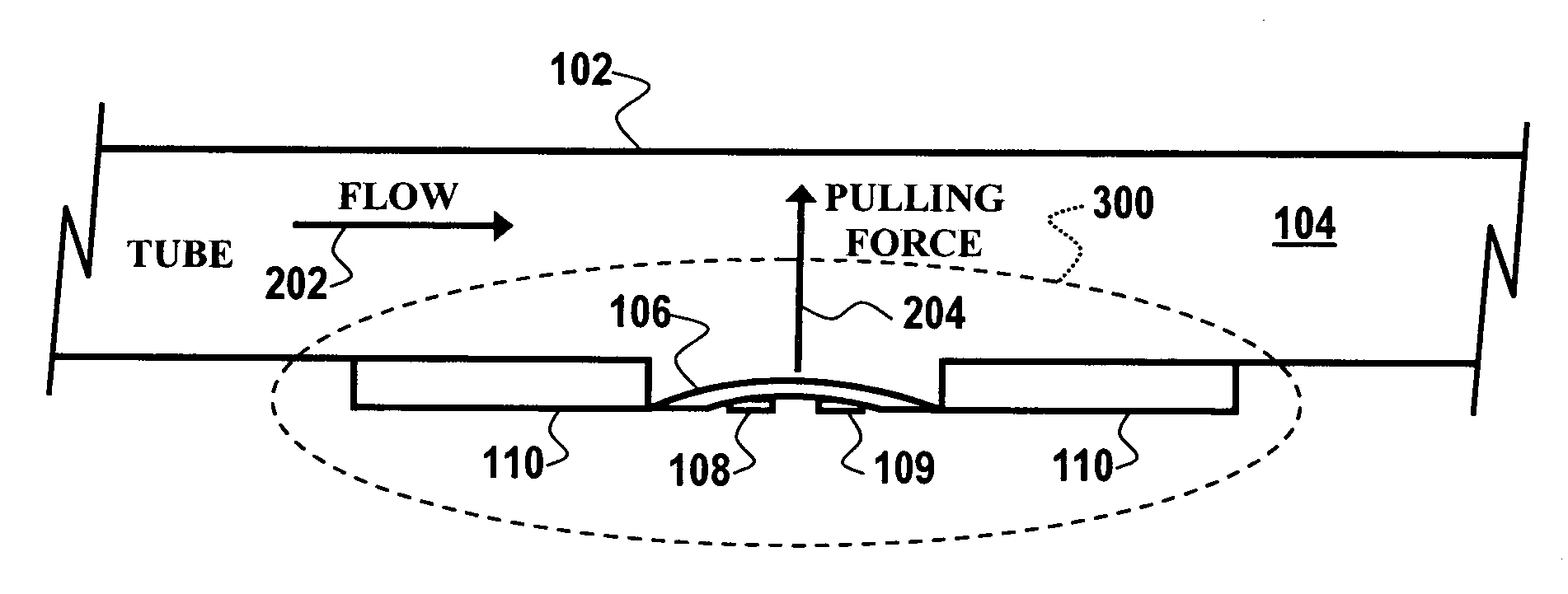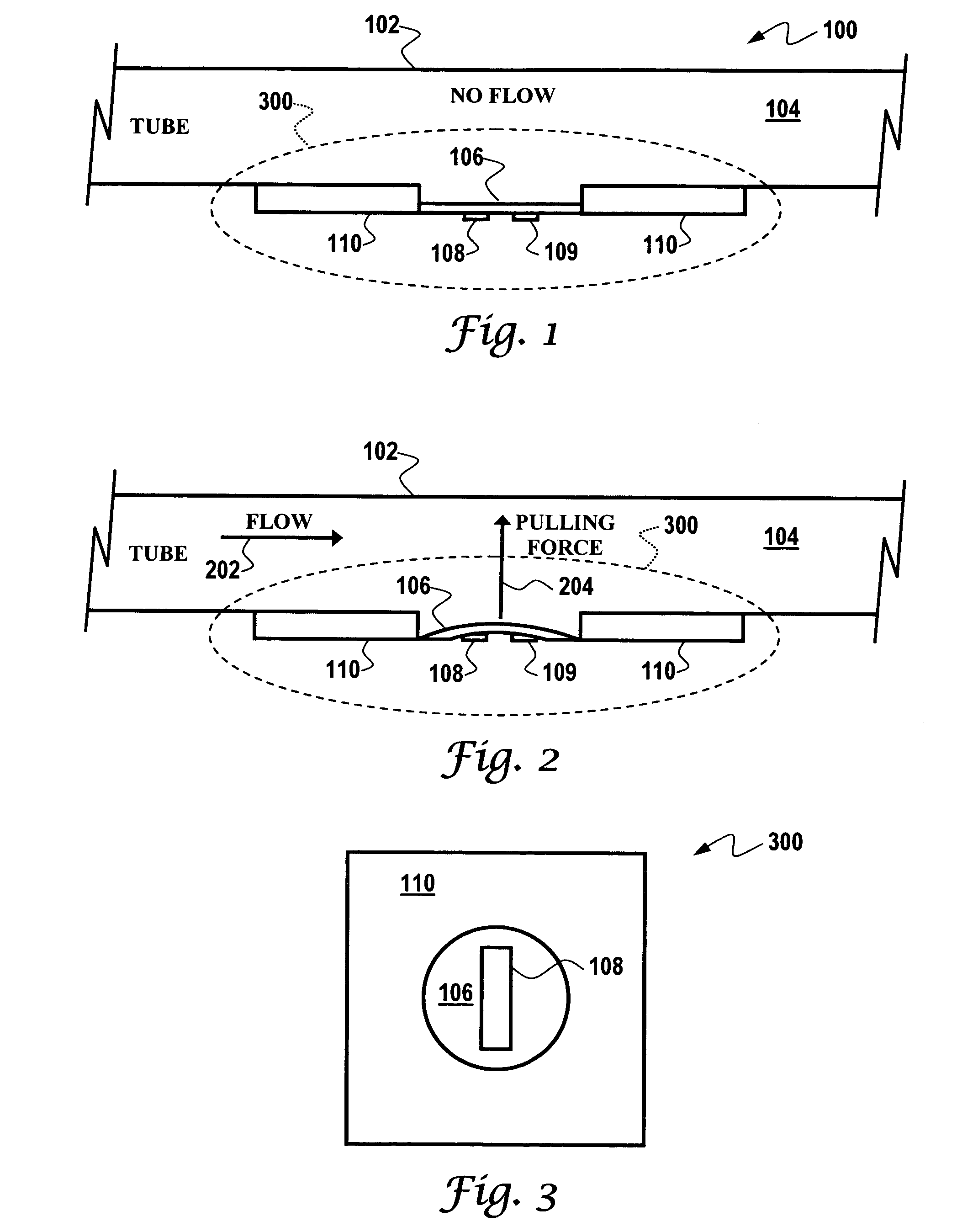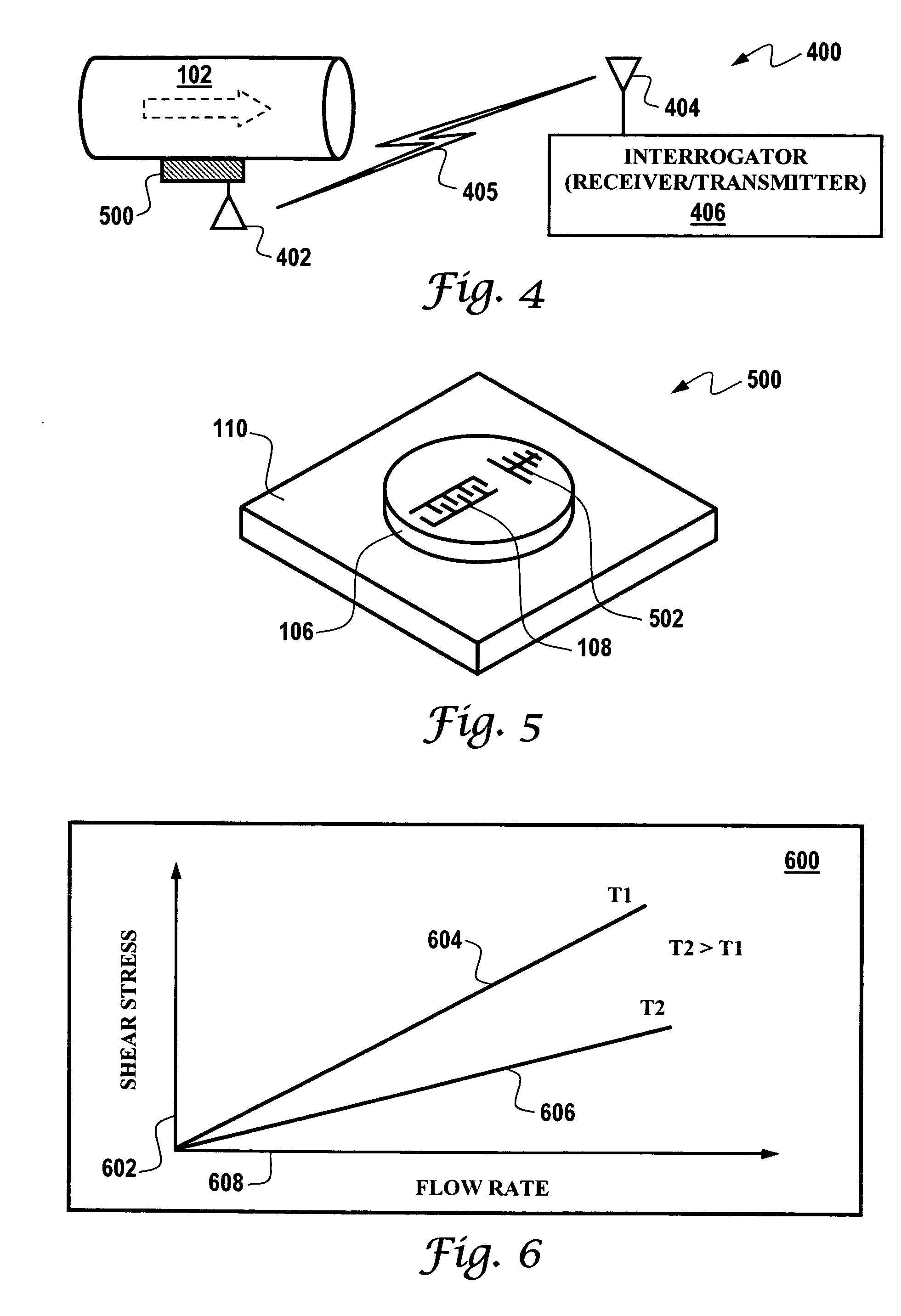Acoustic wave flow sensor
a flow sensor and acoustic wave technology, applied in the direction of volume/mass flow measurement, measurement devices, instruments, etc., can solve the problems of unmet or met, flow sensors generally face potential degradation problems, and expensive, frequent cleaning or replacement of sensors, etc., to achieve high strain/stress sensitivity
- Summary
- Abstract
- Description
- Claims
- Application Information
AI Technical Summary
Benefits of technology
Problems solved by technology
Method used
Image
Examples
Embodiment Construction
[0029]The particular values and configurations discussed in these non-limiting examples can be varied and are cited merely to illustrate at least one embodiment of the present invention and are not intended to limit the scope of the invention.
[0030]FIG. 1 illustrates a side view of a flow sensor system 100 that includes a SAW etched diaphragm 106 not under stress, in accordance with a preferred embodiment. FIG. 2 illustrates a side view of the flow sensor system 100 depicted in FIG. 1 with the SAW etched diaphragm 106 under stress, in accordance with a preferred embodiment. FIG. 3 illustrates a top view of a SAW sensor 300 with the SAW etched diaphragm 106 depicted in FIGS. 1–2, in accordance with a preferred embodiment. Note that in FIGS. 1–3, identical or similar parts or elements are generally indicated by identical reference numerals.
[0031]In the configuration of FIG. 1, system 100 is depicted with a tube 102 having a central portion 104 thereof, wherein fluid is not present or ...
PUM
 Login to View More
Login to View More Abstract
Description
Claims
Application Information
 Login to View More
Login to View More - R&D
- Intellectual Property
- Life Sciences
- Materials
- Tech Scout
- Unparalleled Data Quality
- Higher Quality Content
- 60% Fewer Hallucinations
Browse by: Latest US Patents, China's latest patents, Technical Efficacy Thesaurus, Application Domain, Technology Topic, Popular Technical Reports.
© 2025 PatSnap. All rights reserved.Legal|Privacy policy|Modern Slavery Act Transparency Statement|Sitemap|About US| Contact US: help@patsnap.com



